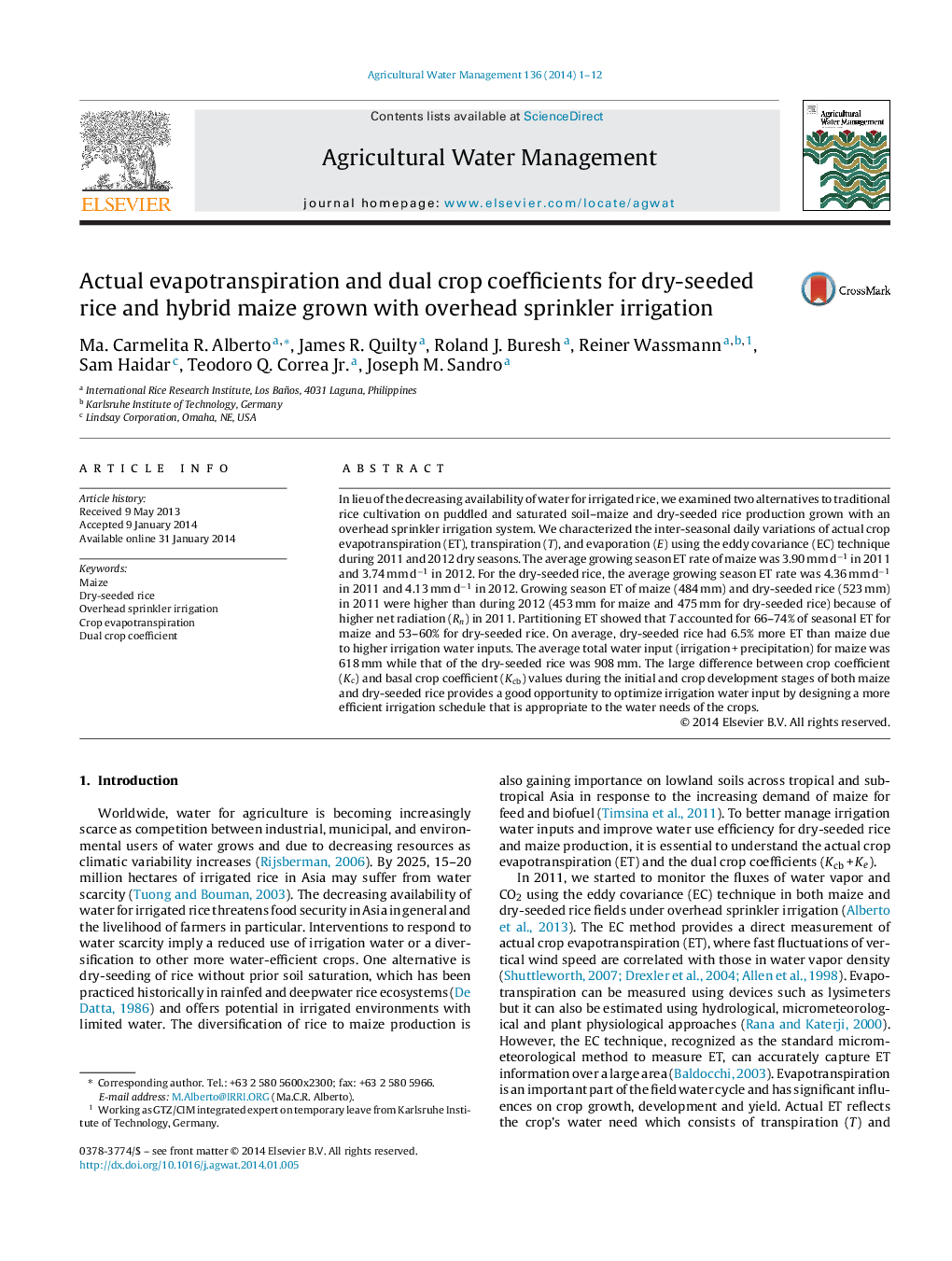| کد مقاله | کد نشریه | سال انتشار | مقاله انگلیسی | نسخه تمام متن |
|---|---|---|---|---|
| 4478715 | 1622943 | 2014 | 12 صفحه PDF | دانلود رایگان |
• This study is the first eddy covariance measurement of ET in maize and dry-seeded rice production in South and Southeast Asia.
• Partitioning ET, T accounted for 66–74% of seasonal ET for maize and 53–60% for dry-seeded rice.
• On average, dry-seeded rice had 6.5% more ET than maize due to higher irrigation water inputs.
• The average total water input (irrigation + precipitation) for maize was 618 mm and 908 mm for dry-seeded rice.
In lieu of the decreasing availability of water for irrigated rice, we examined two alternatives to traditional rice cultivation on puddled and saturated soil–maize and dry-seeded rice production grown with an overhead sprinkler irrigation system. We characterized the inter-seasonal daily variations of actual crop evapotranspiration (ET), transpiration (T), and evaporation (E) using the eddy covariance (EC) technique during 2011 and 2012 dry seasons. The average growing season ET rate of maize was 3.90 mm d−1 in 2011 and 3.74 mm d−1 in 2012. For the dry-seeded rice, the average growing season ET rate was 4.36 mm d−1 in 2011 and 4.13 mm d−1 in 2012. Growing season ET of maize (484 mm) and dry-seeded rice (523 mm) in 2011 were higher than during 2012 (453 mm for maize and 475 mm for dry-seeded rice) because of higher net radiation (Rn) in 2011. Partitioning ET showed that T accounted for 66–74% of seasonal ET for maize and 53–60% for dry-seeded rice. On average, dry-seeded rice had 6.5% more ET than maize due to higher irrigation water inputs. The average total water input (irrigation + precipitation) for maize was 618 mm while that of the dry-seeded rice was 908 mm. The large difference between crop coefficient (Kc) and basal crop coefficient (Kcb) values during the initial and crop development stages of both maize and dry-seeded rice provides a good opportunity to optimize irrigation water input by designing a more efficient irrigation schedule that is appropriate to the water needs of the crops.
Journal: Agricultural Water Management - Volume 136, April 2014, Pages 1–12
